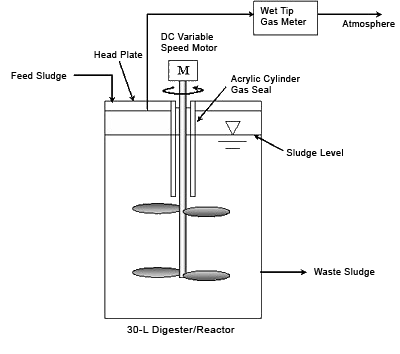Pacific Southwest, Region 9
Serving: Arizona, California, Hawaii, Nevada, Pacific Islands, Tribal Nations
Turning Food Waste into Energy at the East Bay Municipal Utility District (EBMUD)
EBMUD’s Study on Anaerobically Digesting Food Waste
| Food Waste vs. Wastewater Solids Comparison | ||
|---|---|---|
| Parameter | Food Waste Pulp | Wastewater Solids |
| Volatile Solids in Feed (%) | 85-90 | 70-80 |
| Volatile Solids Loading (lbs/ft3-day) | 0.60 + | 0.20 max |
| COD Loading (lbs/ft3-day) | 1.25 + | 0.06-0.30 |
| Total Solid Fed (%) | 10 + | 4 |
| Volatile Solids Reduction (%) | 80 | 56 |
| Hydraulic Detention Time (days) | 10 | 15 |
| Methane Gas Produced (meter3/ton) | 367 | 120 |
| Gas Produced (liters/liter of digested volume) | 58 | 17 |
| Biosolids Produced (lbs/lbs fed) | 0.28 | 0.55 |
This food waste can be anaerobically digested for energy value and landfill diversion. |
||
EBMUD completed a study that identified design and operating criteria for anaerobic digestion of food waste. In addition, the study also compared the anaerobic digestion of food waste versus wastewater solids.
Key Findings
Anaerobic digestion of food waste has approximately three times the methane production potential by volume than municipal wastewater solids. The study found that the methane production potential of biosolids was 120 m3 gas/ton and food waste around 367 m3 gas/ton. Additionally, anaerobically digesting 100 tons of food waste per day, five days a week, provides sufficient power for approximately 1,000 homes.
Food waste is more readily digestible than wastewater sludge, thus a shorter residence time is needed to process the waste. The shorter residence time means that food waste can be processed in smaller digesters than municipal solids, resulting in lower capital costs. Additionally, a digester can accept much more food waste at one time than wastewater solids without adverse impacts
Materials and Methods

EBMUD operated two 30-liter bench-scale digesters at mesophilic and thermophilic temperatures and at 15-, 10-, and 5- day solids residence times during the study. The digesters were fed food waste pulp produced via EBMUD’s treatment process.
